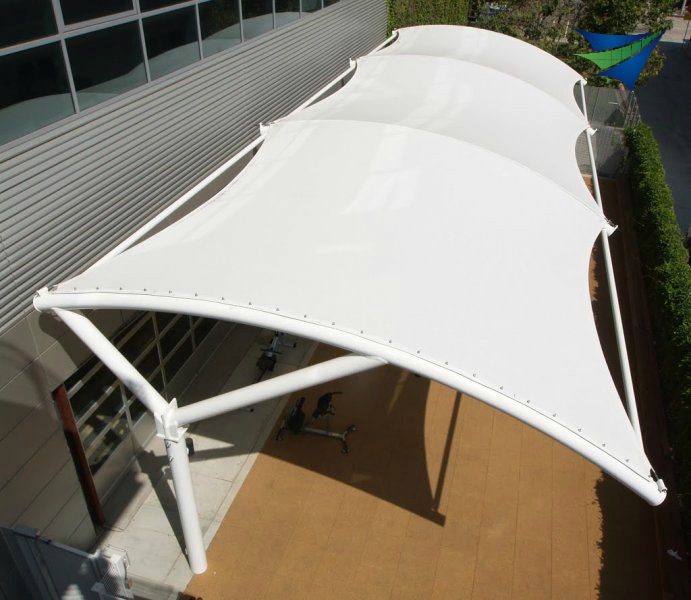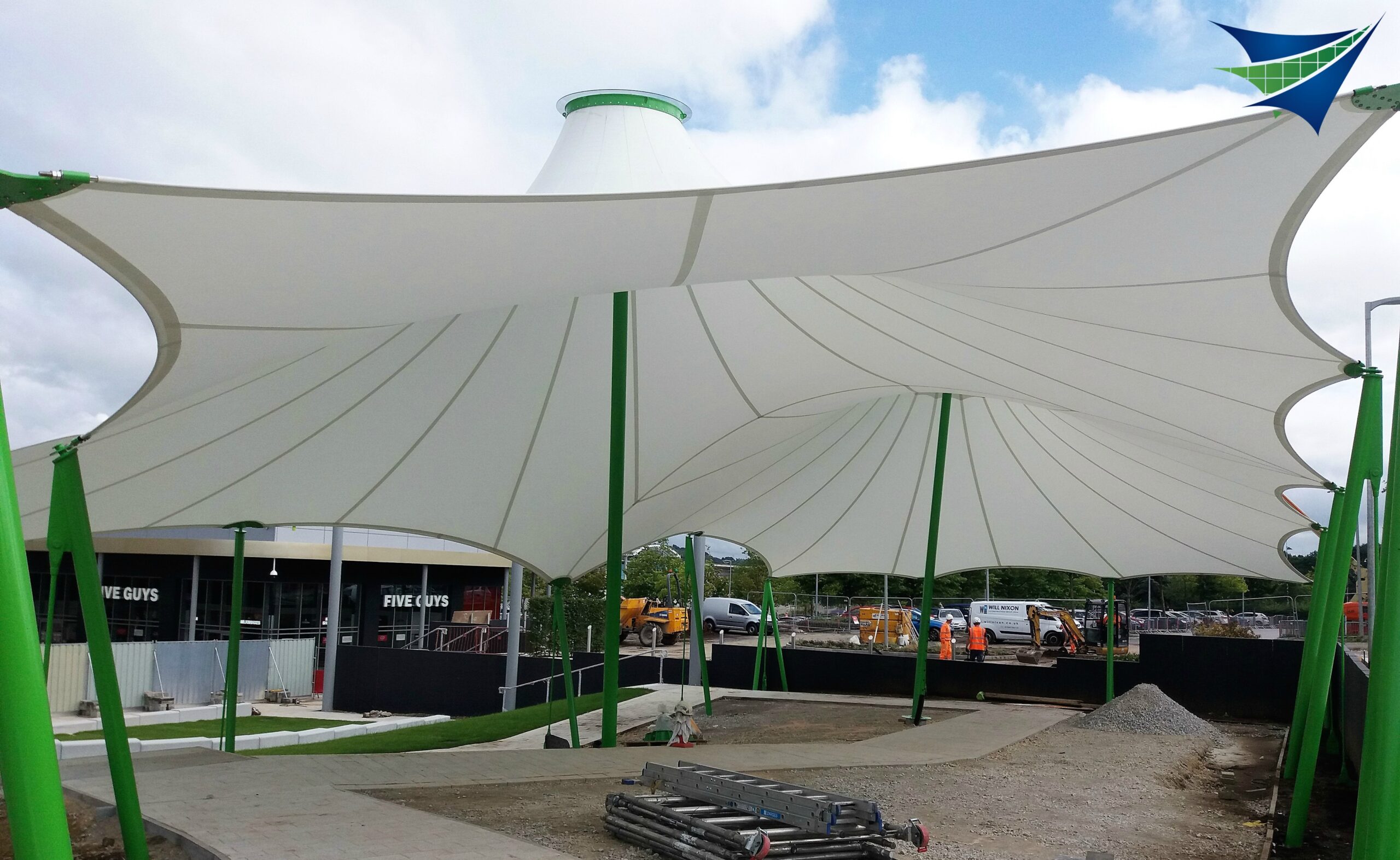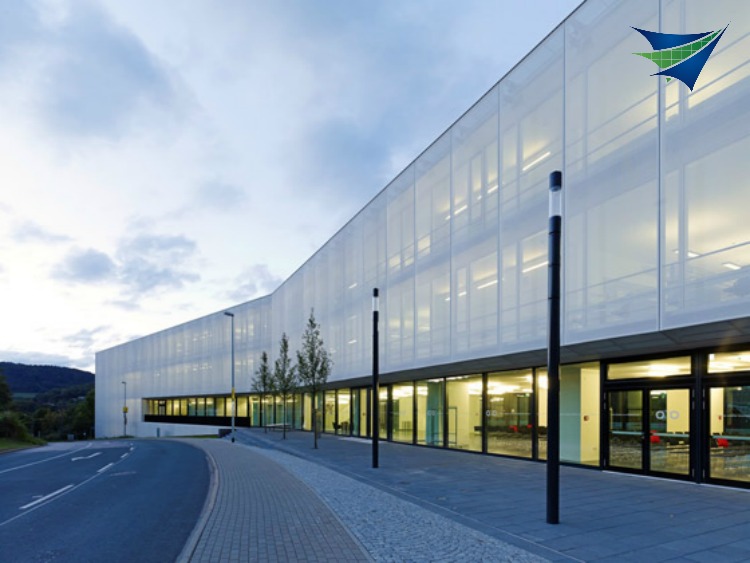Vinyl Coated Polyester (VCP) Membrane
Kynar™ Coated Membrane or Dupont Tedlar™ Coated Membrane
For more permanent or long-term applications of 12 years or more


Acrylic PVC Coated Membrane
Best for temporary or short-term applications of less than 12 years
PVC (Polyvinyl Chloride) fabric membrane is the most widely used tensile and tension membrane fabric. PVC is commonly produced in white but can be produced in a multitude of colors depending on individual project requirements. When produced in white, this flexible fabric membrane reduces radiant heat gain thus keeping interior temperatures cooler in warmer environments and saving energy. PVC is commonly coated with protective acrylic lacquer, PVDF alloy, or 100% PVDF top coatings.
PVDF Alloy
PVDF alloy is constructed of fluoride, carbon, and hydrogen. It has good resistance to airborne pollutants and UV. This top surface coating is not 100% PVDF but can be easily HF/RF welded. This material is commonly known as weldable PVDF in today’s market and as such it is economical to manufacture. Based on its average self-cleaning characteristics the VCP has a design life of approximately 12 to 15 years depending on geographic location.
When VCP membranes are coated with titanium dioxide (TiO²) photo-catalyst they inherit self-cleaning properties that are superior to conventional VCP coatings. Known as the Photocatalytic decomposition process, this self-cleaning action occurs when TiO² causes organic matter (stains or pollutants) to decompose through simple oxidation. The residue does not adhere to the surface and is washed away by water or rain. The Photocatalytic hydrophilic process, the sheeting action of water across the surface, assures no unsightly streaking is left behind due to water beading.

